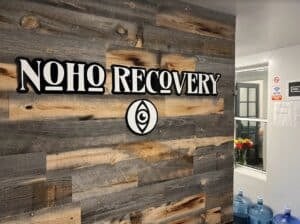Dilaudid Symptoms And Warning Signs
Signs of Dilaudid Abuse
As a painkiller stronger than morphine, Dilaudid has a serious potential for abuse and addiction. Some people following their prescription may develop a physical dependence. An individual with a Dilaudid dependence will experience withdrawal symptoms if they cease taking the medication or reduce their dose. In some cases, a full-blown addiction may develop, which is characterized by cravings, hazardous behaviors, relationship issues, or problems at home, school or work.
As someone develops a tolerance to the drug, they require more frequent and increased doses to achieve the desired “high.
Some signs of Dilaudid abuse include:
- Constricted pupils
- Loss of alertness
- Slowed breathing
- Drowsiness
- Mood swings
Online Addiction Counseling
Get professional help from an online addiction and mental health counselor from BetterHelp.
- Access to Therapy 24/7
- Easy Online Scheduling
- 20,000+ Licensed Therapists
Paid Advertising. We may receive advertising fees if you follow links to the BetterHelp site.
Dangers Of Dilaudid
Dilaudid is dangerous because tolerance ramps up quickly, leading many users to escalate their doses. Taking larger doses of Dilaudid may lead to shallow, decreased breathing, circulatory collapse or possibly respiratory failure. This is especially true when combined with alcohol or other drugs that are also Central Nervous System Depressants.
Possible serious complications of Dilaudid abuse include:
- Stroke
- Coma
- Nausea and vomiting
- Collapsed veins
- Stomach pain
- Convulsions
- Heart attack
- Trouble breathing
- Death
Dilaudid users who inject the drug are at a heightened risk of receiving and transmitting HIV/AIDS and hepatitis.
Dilaudid addiction can also impact other parts of a user’s life, leading to problems such as:
- Financial devastation due to the high price of Dilaudid
- Divorce caused by prioritizing drug use over marriage
- Incarceration due to theft or forging prescriptions
- Moving on to stronger, cheaper drugs like heroin
Recognizing A Dilaudid Addiction
Dilaudid abuse can quickly lead to an addiction. But just because someone is using the drug recreationally, it doesn’t mean they are addicted. There are certain signs and behaviors that indicate when an addiction has taken hold.
Developing a tolerance to Dilaudid is often the first step for people on a trajectory toward addiction. People with a tolerance need higher doses to feel the same effects as the first time they took the drug. Other red flags include obsessive thoughts, cravings, or urges to use the drug.
In order to relive the desired “rush” from Dilaudid, many users become focused on getting the drug at all costs. Some people spend a great deal of time doctor shopping, stealing the drug or searching online for distributors.
Relationships with family and friends may become strained due to the time and energy the user is devoting to their habit.
Something that started out of curiosity or even through a legitimate prescription may escalate to the point where users cannot control their drug-taking behaviors. People addicted to Dilaudid often obsess over the drug and tend to put their drug use before everything else.
Looking for a place to start?
Join the thousands of people that have called a treatment provider for rehab information.
Free and confidential
Available 24/7
Access to professional treatment
Intervention And Next Steps
Some people addicted to Dilaudid don’t realize they have a problem. They often think they are in control, especially if they have a prescription.
Friends and family may feel frustrated by their loved one’s Dilaudid addiction. Staging an intervention is one way family members can take control of the situation.
In an intervention, family and friends make it clear they will no longer enable the addiction, but they also offer their love and support for the addict’s treatment and recovery.
An interventionist can help guide an effective conversation with the addicted person. Skilled interventionists do pre-intervention research and interviews with the family. This helps identify any enabling behaviors that can get in the way of the intervention.
A successful intervention culminates with the user agreeing to seek treatment. Immediate admission to a drug treatment facility typically follows a successful intervention.
Check if my insurance covers rehab
Addiction Center is not affiliated with any insurance.
Withdrawal From Dilaudid And Treatment
Because an addiction to Dilaudid is so serious, users shouldn’t detox on their own. Cravings and withdrawal are intense during detox. Without professional supervision, withdrawal often leads to relapse. Physicians can monitor the detox process and help the addicted person manage their withdrawal symptoms.
The detox process for Dilaudid may involve a gradual reduction in the user’s dose. Incrementally cutting down doses helps ease users through the withdrawal phase, limiting painful symptoms. In a medically-supervised detox setting, Dilaudid users are typically switched to Buprenorphine (Subutex or Suboxone) or a similar drug as it is more effective at tapering down from Opioids and curbing withdrawal symptoms.
If the user has not been taking Dilaudid for a long period, they may be able to quit “cold turkey,” but should only do so under a doctor’s care.
A thorough assessment is conducted during detox to evaluate for other areas of concern, such as other addictions or mental health issues. These assessments are designed to identify possible co-occurring disorders and physical health issues.
Treatment centers treat the mind, body, and spirit holistically. Therapy is and important part of treatment for an addiction to Dilaudid. Counseling can help users pinpoint the underlying causes of their addiction, helping them change their habits and behaviors. Contact a treatment provider today.
Published:
Author
Jeffrey Juergens

-
Jeffrey Juergens earned his Bachelor’s and Juris Doctor from the University of Florida. Jeffrey’s desire to help others led him to focus on economic and social development and policy making. After graduation, he decided to pursue his passion of writing and editing. Jeffrey’s mission is to educate and inform the public on addiction issues and help those in need of treatment find the best option for them.
- More from Jeffrey Juergens
Reviewed by Certified Addiction Professional:
Theresa Parisi

Theresa Parisi is a Certified Addiction Professional (CAP), Certified Behavioral Health Case Manager (CBHCM), and International Certified Alcohol and Drug Counselor (ICADC) with over 12 years of experience in the addiction treatment field.
- More from Theresa Parisi
Sources


Recovery Starts Today
Call Now For Addiction Support



Newport Academy – Teen Rehab Center
Port Townsend , WA


Sequoia Detox Centers
Spokane Valley , WA


Moonlight Mountain Recovery – Nampa
Nampa , ID

Bayside Marin Treatment Center
San Rafael , CA

Newport Institute for Young Adults
Sunol , CA

The Camp Recovery Center
Scotts Valley , CA

Moonlight Mountain Recovery
Pocatello , ID


Tarzana Recovery Center – TRC
Tarzana , CA



Hollywood Hills Recovery
Los Angelos , CA